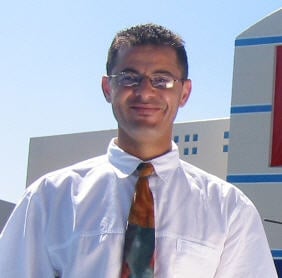Vibratory Therapy for the Neuromusculoskeletal Health
A special issue of Journal of Clinical Medicine (ISSN 2077-0383). This special issue belongs to the section "Sports Medicine".
Deadline for manuscript submissions: closed (25 April 2024) | Viewed by 7548
Special Issue Editors
Interests: biomechanics of health disease and rehabilitation; industry engineering for medicine and high-level sport
Special Issues, Collections and Topics in MDPI journals
Interests: sport; health; disease; rehabilitation
Special Issues, Collections and Topics in MDPI journals
Special Issue Information
Dear Colleagues,
Mechanical vibration, under controlled parameters, can promote biological responses that are responsible for improvements in the neuromusculoskeletal system when the individual is exposed to this vibratory stimulus. Mechanical vibration is naturally present in various cells, tissues, and organs, and it is essential to life and health. This vibratory stimulus can be added/transmitted to the whole body of the individual in daily activities and in vibratory therapy. In systemic vibratory therapy (SVT), the whole-body vibration exercise is produced when the mechanical vibration is generated in the vibrating platform, and it is transmitted to the body of the individual. Highly relevant effects due to SVT have been reported, such as improvements in muscular strength, bone mineral density, cognition, quality of life, and functional abilities in several populations. It is also possible for the transmission of mechanical vibration to be local, named local vibratory therapy (LVT). In this case, the mechanical vibration is generated in small and portable vibrators, and it is applied directly in a region of the body, over the tendon or muscle belly. Important effects related to the LVT have also been reported in different populations improving neuromuscular performance and functionality. A relevant challenge considering the SVT and LVT is to establish the best clinical protocols to be used in children, adolescents, and adults for the improvement of neuromusculoskeletal health, aiding in rehabilitation, and in the quality of life. Moreover, the mechanisms involved in vibratory therapy must be better understood. The comprehension of the possible use of SVT and LVT and the consequence of this exposure can aid in the development of conditions to minimize the undesirable effects in the workplace.
The aim of this Special Issue is to integrate knowledge to try to better understand the effects of mechanical vibrations in the human body to improve the application of the vibratory stimulus in medicine, sport, and at work.
Prof. Dr. Redha Taiar
Prof. Dr. Mario Bernardo-Filho
Dr. Danúbia Da Cunha De Sá-Caputo
Guest Editors
Manuscript Submission Information
Manuscripts should be submitted online at www.mdpi.com by registering and logging in to this website. Once you are registered, click here to go to the submission form. Manuscripts can be submitted until the deadline. All submissions that pass pre-check are peer-reviewed. Accepted papers will be published continuously in the journal (as soon as accepted) and will be listed together on the special issue website. Research articles, review articles as well as short communications are invited. For planned papers, a title and short abstract (about 100 words) can be sent to the Editorial Office for announcement on this website.
Submitted manuscripts should not have been published previously, nor be under consideration for publication elsewhere (except conference proceedings papers). All manuscripts are thoroughly refereed through a single-blind peer-review process. A guide for authors and other relevant information for submission of manuscripts is available on the Instructions for Authors page. Journal of Clinical Medicine is an international peer-reviewed open access semimonthly journal published by MDPI.
Please visit the Instructions for Authors page before submitting a manuscript. The Article Processing Charge (APC) for publication in this open access journal is 2600 CHF (Swiss Francs). Submitted papers should be well formatted and use good English. Authors may use MDPI's English editing service prior to publication or during author revisions.
Keywords
- systemic vibratory therapy
- local vibratory therapy
- whole-body vibration exercise
- rehabilitation
- healthcare
- neuromusculoskeletal system
- neuromusculoskeletal disorders
- mechanical vibration in the workplace
- mechanical vibration exposure
- quality of life








